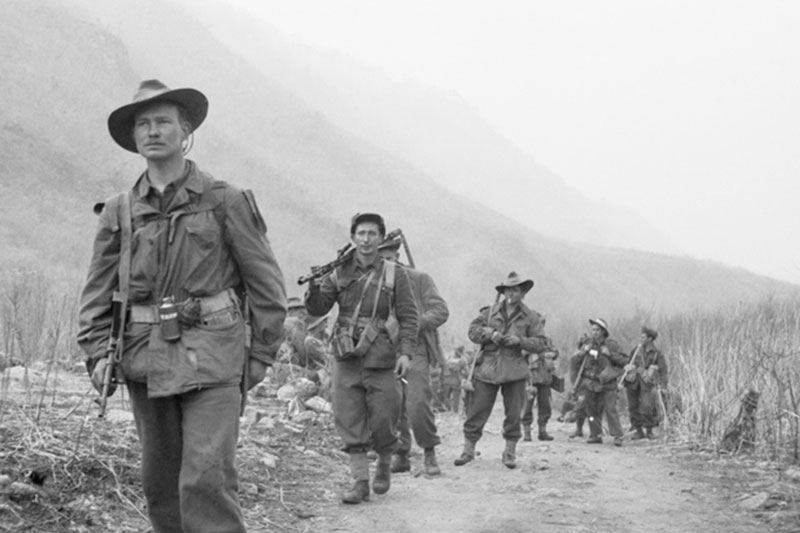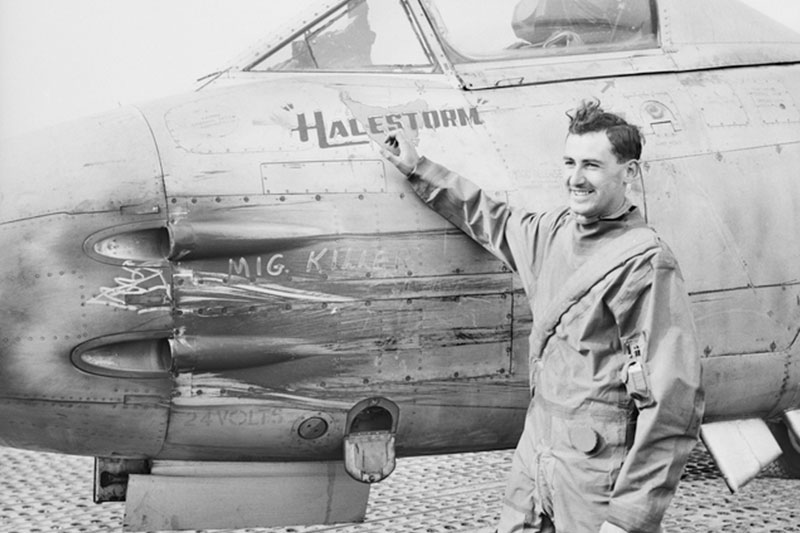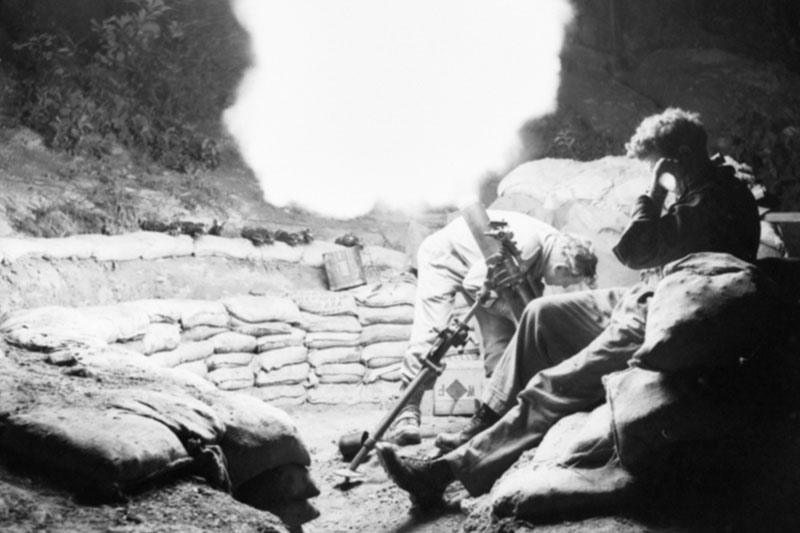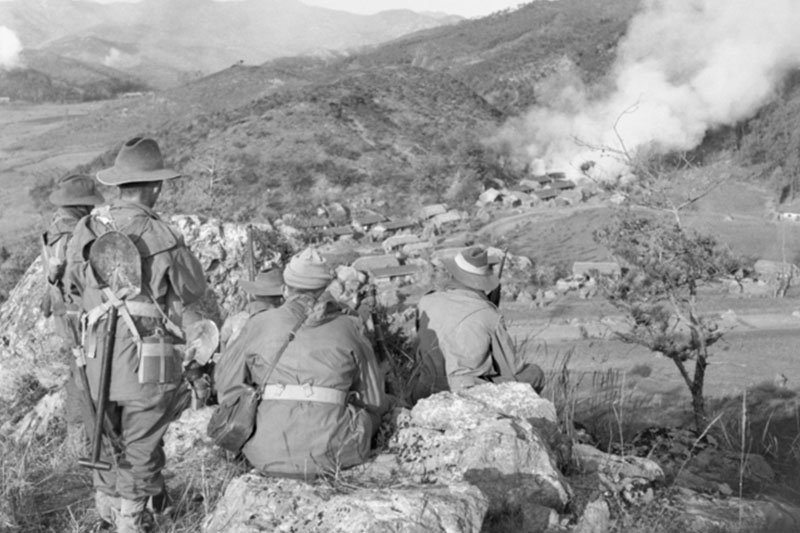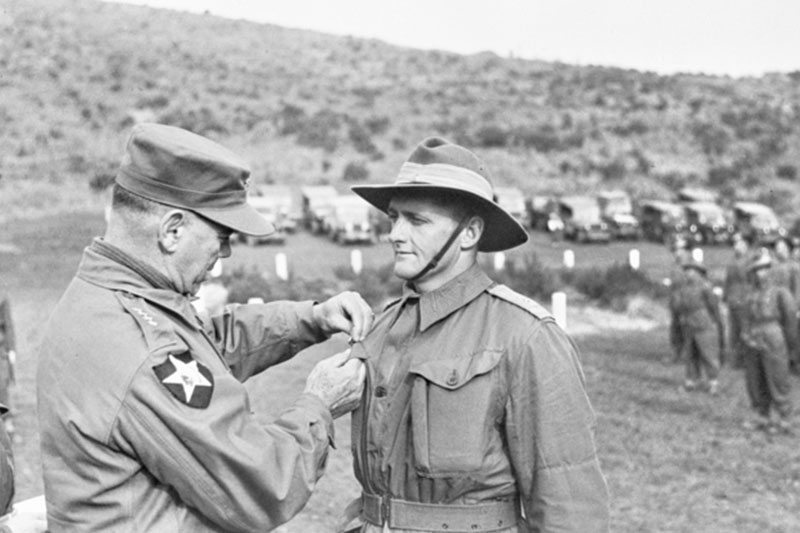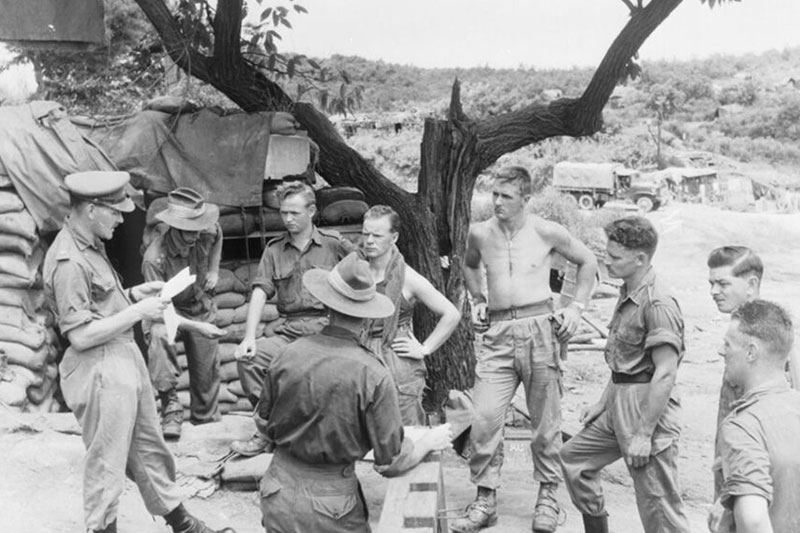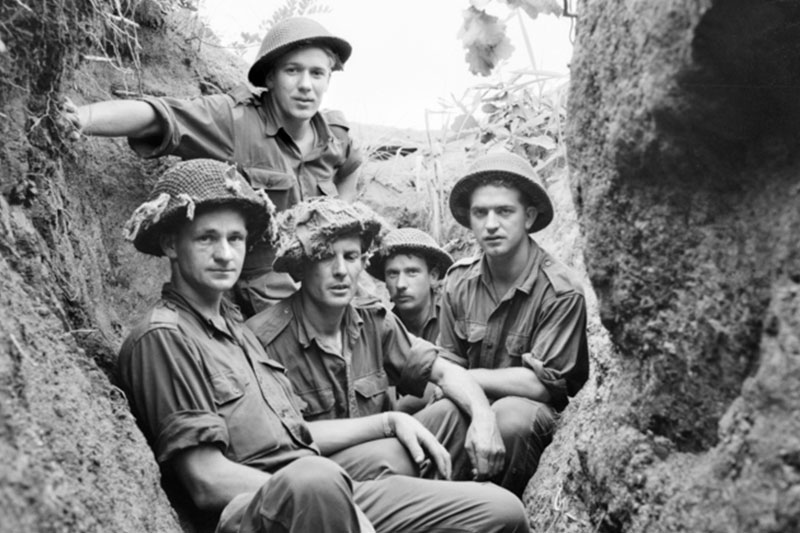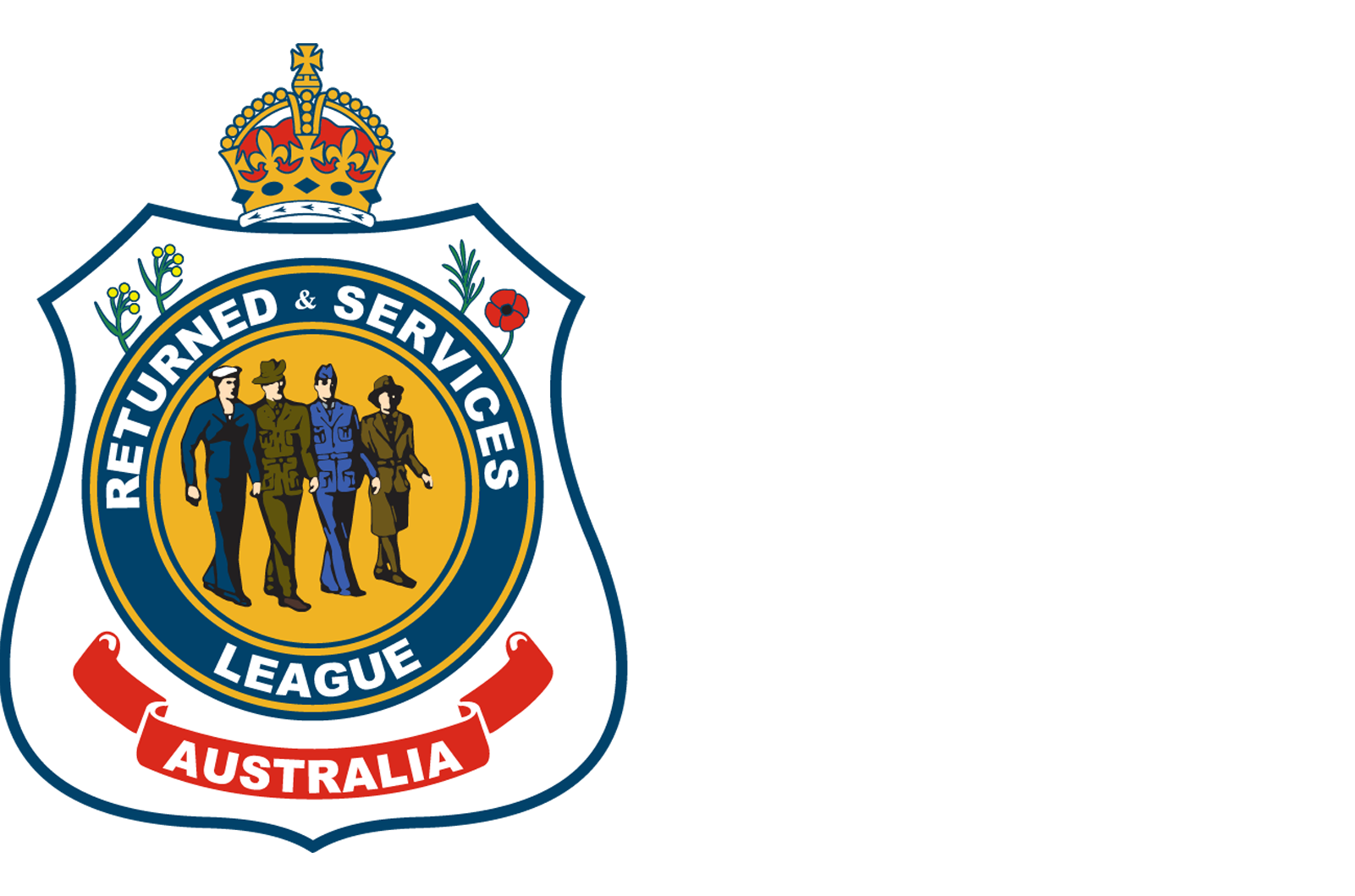19 July 2023
Remembering Australia's part in the Korean War
How did the Korean War start?
The Korean War (1950-53) emerged from the shadows of WWII.
Japan’s defeat in 1945 put an end to 35 years of Japanese occupation in Korea. Control of the Korean peninsula was entrusted to the United States and Soviet Union, which accepted responsibility for the zones south and north (respectively) of the 38th parallel.
Image: Australian War Memorial | Members of C Company 3RAR, lead by CPL Len Wright (left), move forward from Hill 614 to attack Hill 587.
By 1948, two separate Korean governments – one republican (in the south) and one communist (in the north) – emerged, each claiming control over the entire peninsula.
Tensions between the two mounted until 25 June 1950, when the communist Korean People's Army (KPA) crossed the border in a bid to unify Korea by force.
North Korea vs South Korea: AUSTRALIA JOINS THE DEFENCE
The Soviet-backed KPA rapidly drove South Korea’s troops – known as the Republic of Korea Army (ROK) – south, taking the capital, Seoul, within days. As the KPA forced them further south, ROK and US troops fought delaying actions, establishing defensive positions around the city of Pusan.
Led by the United States, 21 United Nations (UN) members sent forces to South Korea’s defence. Australia was the second after the US to commit personnel from its army, navy and air force.
Image: Australian War Memorial | SGT George Hale, Pilot, 77 Squadron Royal Australian Airforce after a brush with MIG fighters over North Korea.
Royal Australian Air Force (RAAF) No. 77 Squadron, HMAS Shoalhaven and HMAS Bataan – all then stationed in Japan – were swiftly deployed. 77 Squadron was the first Commonwealth and UN unit to see action during the war and, in the following weeks, flew numerous battles and ground support operations that helped slow North Korea’s advance. A further seven Royal Australian Navy (RAN) ships were later deployed.
“Without the Navy, the Naval Air Force and 77 Squadron, we’d have been in all sorts of problems.
I have the greatest admiration for the 77 Squadron because they flew in weather where no other air force would put an aircraft in the air.
HMAS Sydney launched more flights than any other naval ship in the Korean War. And they went through hell. The washer washed three aircraft off the deck in winter when big ice flows were slamming onto the deck. It was horrendous, but they did a great job.” – Private Matthew Rennie OAM (Retd), 2RAR and 3RAR
Supreme Commander of the UN forces, General Douglas MacArthur, ordered a landing at the port of Inchon. A week later, Seoul was recaptured and UN forces began their advance towards the 38th parallel, driving the KPA as far north as the Chinese border.
The newly reinforced 3rd Battalion, Royal Australian Regiment (3RAR) arrived in September 1950, joining the British 27th Brigade to form the 27th Commonwealth Brigade, fighting multiple battles over the course of the war.
Image: Australian War Memorial | A three inch mortar of the 3rd Battalion, The Royal Australian Regiment (3RAR), firing at night during a battle on the Korean front.
A struggle to live
Korea’s rugged terrain and extremes of climate created constant struggles for troops. With mountains and valleys covering 80% of the country, even short-distance travel was slow and exhausting.
Summer brought intense heat and humidity along with flies, mites and mosquitoes. Meanwhile, winter brought lengthy snow and bitter cold, and Australian forces – initially ill-prepared for the weather – had to be issued with warmer clothing. Soldiers slept with their guns to their chests to stop the parts from freezing. Some lost fingers or toes to frostbite.
“I remember the dust, the heat, the enervating humidity, the bitter cold of winter when the men slept with their boots on and weapons cradled lest they should be found frozen in an emergency; the soldiers on listening post, lying silently on the frozen ground trying desperately to remain alert, knowing they were responsible for the safety of their comrades.” – Lieutenant General Sir Thomas Daly KBE CB DSO
Image: Australian War Memorial | Soldiers from C Company 3RAR watch for the enemy while a village in valley below burns.
China enters the war
Against China’s warning, UN forces pursued the enemy into North Korea, capturing the capital of Pyongyang soon after. China entered the war in response, inflicting heavy defeats that forced the UN troops back south.
Fighting stalled in the first half of 1951, with both sides advancing, retreating, and capturing Seoul as the months ensued.
In July, ceasefire negotiations began at the UN headquarters in New York but failed to make progress.
The Battle of Kapyong
The most significant battle fought by Australian forces in the Korean War was the Battle of Kapyong.
On 22 April 1951, Chinese forces launched a major offensive in a bid to retake Seoul. They quickly overran South Korean forces defending the nearby valley of the Kapyong River, and the 27th British Commonwealth Brigade (including 3RAR) was ordered to their allies’ aid.
Several days and nights of fighting ensued – much of it brutal hand-to-hand combat – with 3RAR and 2nd Battalion, Princess Patricia’s Canadian Light Infantry (2 PPCLI) bearing the brunt of the attack.
Supported by 1st Battalion the Middlesex Regiment (1MR), American tanks and mortar and New Zealand artillery, the UN force – some 2,800 soldiers combined – managed to stall a Chinese division of at least 10,000, preventing Seoul from falling again.
“At last I felt like an ANZAC, and I imagine there were 600 others like me.” – Captain Reg Saunders, Officer Commanding, C Company, 3RAR
3RAR suffered heavy casualties with 32 killed, 53 wounded, and three taken prisoner. Both 3RAR and 2 PPCLI received US Presidential Distinguished Unit Citations for their actions.
Image: Australian War Memorial | Solider from 3RAR received the US Presidential Distinguished Unit Citation Device from General James Van Fleet, Commanding Officer of the 8th US Army in Korea.
The Battle for Maryang San
On 3 October 1951, 3RAR took part in a large UN offensive against a Chinese salient, attacking two strategically important hills near the Imjin River: Maryang San and Kowang San. The attack became known as ‘Operation Commando’, or the Battle for Maryang San.
Following five days of fierce fighting, the outnumbered UN forces forced the Chinese to withdraw. After resisting several counter-attacks, 3RAR had firm control of Maryang San. Twenty Australians were killed and 89 were wounded during the battle.
A two-year stalemate
In its final two years, the Korean War became a stalemate, with both sides locked into trench warfare around the border.
In 1952, 1RAR and 2RAR joined 3RAR, reinforcing Australian troops’ reputation for patrolling and raiding, as established in WWI and II.
The Korean War armistice
With a negotiated truce seen as the only viable end to the war, the UN and North Korean leaders signed an armistice on 27 July 1953.
The armistice technically ended the war, but suspended hostilities continued between North Korea and South Korea. Today, the two countries remain divided by a 2km demilitarised zone at the 38th parallel.
Image: Imperial War Museum MH 32765 | MAJ Wilson of the 2nd Battalion Royal Australia Regiment reads ceasefire instructions to Headquarters personnel.
Legacy of a ‘forgotten war’
The Korean War was one of the bloodiest conflicts of the 20th century, claiming an estimated two to five million lives. It’s believed that as many as three million Korean War casualties were civilians.
Nearly 18,000 Australian soldiers, sailors, airmen and nurses served in the Korean War, with some remaining in Korea until 1957 as part of a multinational peacekeeping force. Sadly, 340 Australian service men lost their lives, more than 1,200 were wounded, and 29 were taken prisoner. More than 40 remain missing in action, presumed dead.
Image: Australian War Museum | Soldiers of C Company, 2nd Battalion Royal Australia Regiment (2RAR) at Majon'ni after relieving 1st Battalion King's Regiment.
Unlike our WWI and WWII veterans, however, many of Australian’s Korean War veterans returned home to relative indifference. The war they fought – in a distant land – would never gain the profile of other conflicts, and sadly became known as the 'forgotten war'.
Korean Veterans’ Day (27 July) is a chance for Australians to ensure their service and sacrifice is never forgotten.
Information sourced from Australian War Memorial, Department of Veterans' Affairs, Imperial War Museum, Australian Army, and National Museum of Australia.
Korean Veterans’ Day | 27 July
On 27 July, join RSL Queensland in honouring the invaluable contribution of Australians who served in the Korean War.

